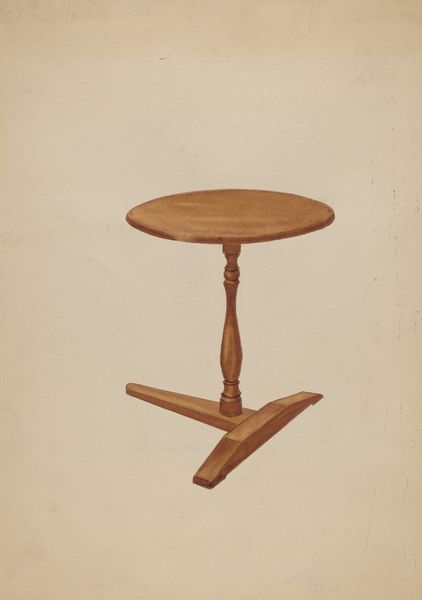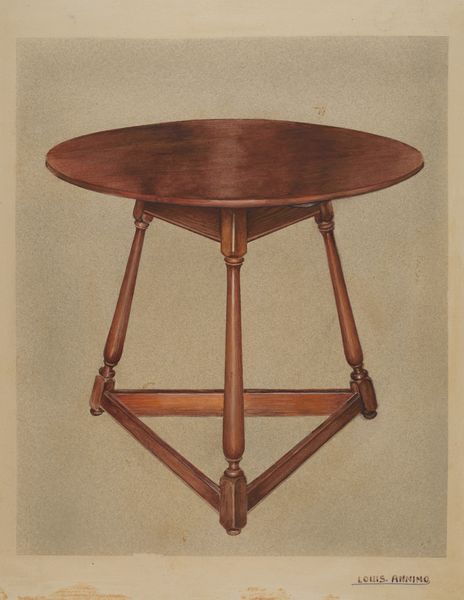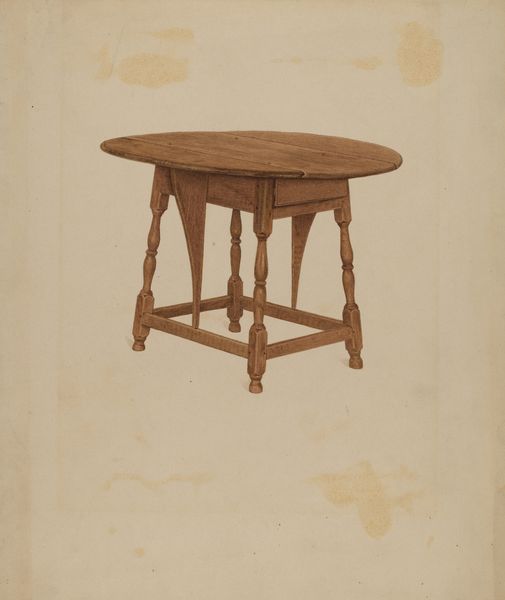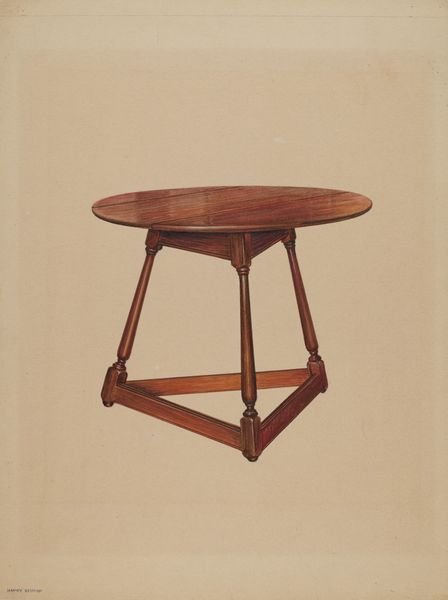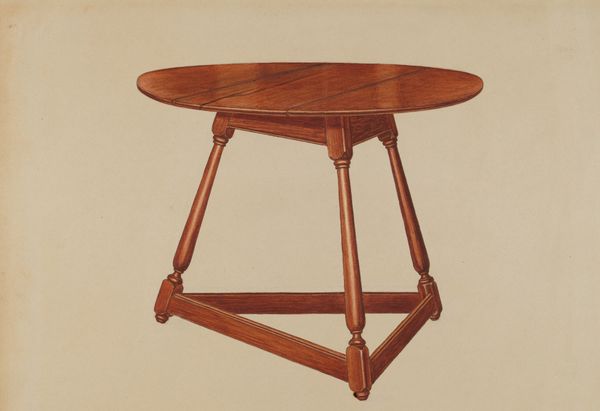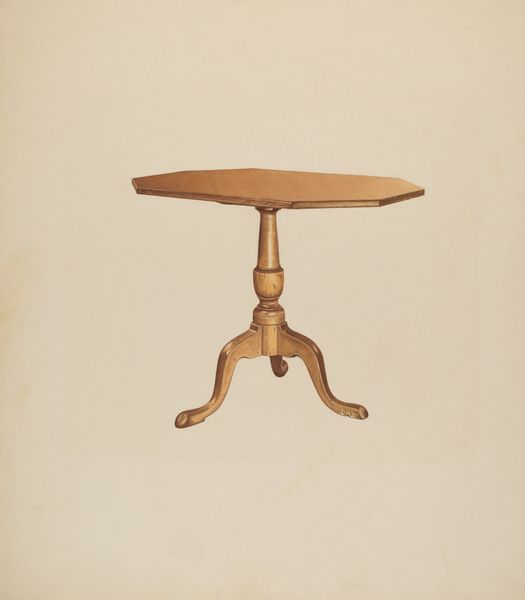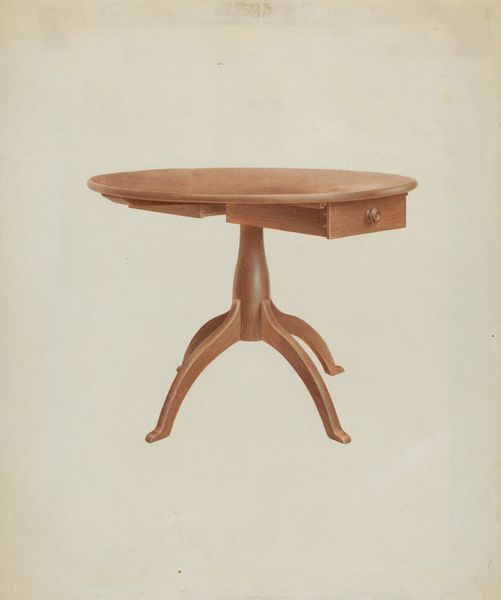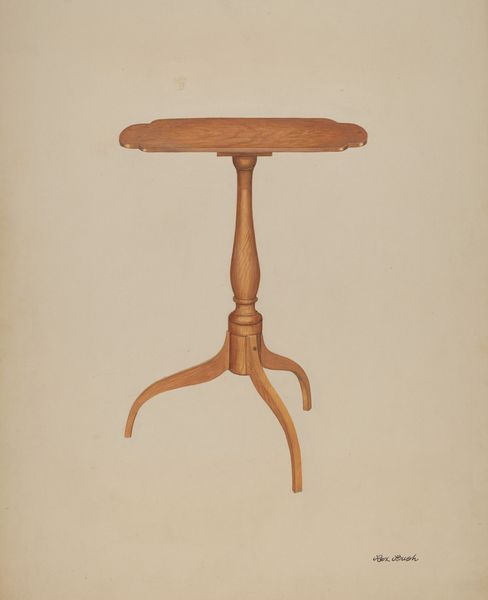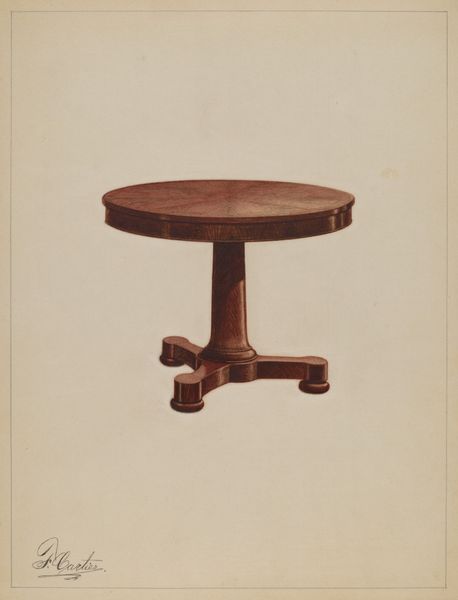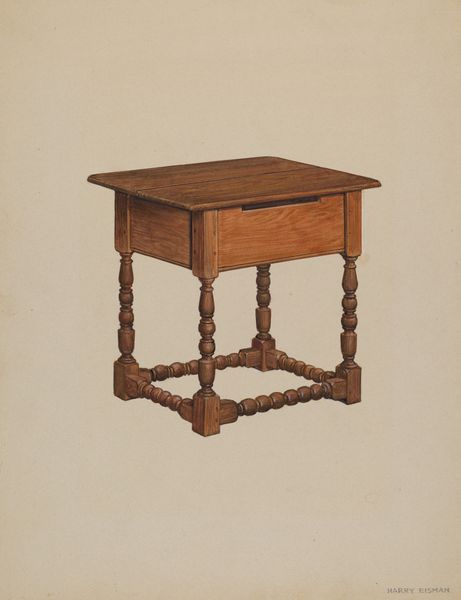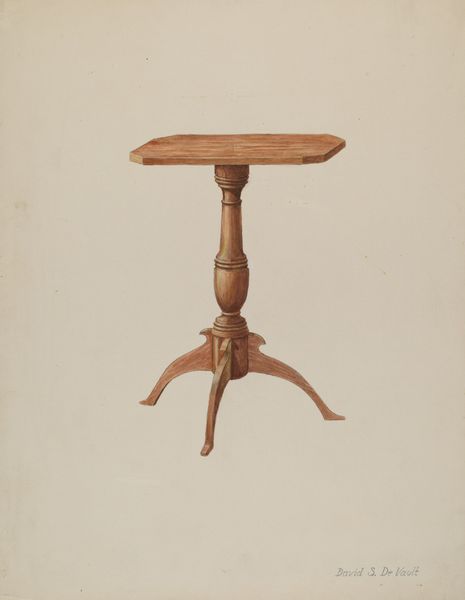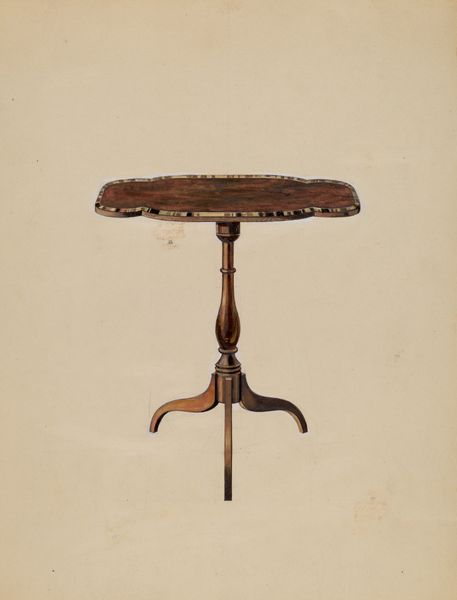
drawing, watercolor
#
drawing
#
watercolor
#
watercolour illustration
#
realism
Dimensions: overall: 40.8 x 30.5 cm (16 1/16 x 12 in.) Original IAD Object: overall: 29" high; top: 2' diameter
Copyright: National Gallery of Art: CC0 1.0
Curator: Here we have Violet Hartenstein’s "Round Top Table," likely from around 1940, rendered in watercolor and drawing. Editor: It has an unusual sturdiness to it for a watercolour – almost sculptural, like a miniaturized monument! Curator: Exactly, the attention to form and materiality is fascinating. Think about what tables meant at the time: centers of domestic and perhaps also manufacturing labor during and following the Depression. What would it take to get raw material? Editor: And who had access to it? Considering the table’s somewhat bourgeois, middle-class presentation and the economic backdrop of the era, its very existence speaks to issues of access and power. Was it a common domestic item, or more ornamental, signaling status? Curator: Absolutely, consider the techniques of furniture making prevalent in that era—the specific tooling used, the training required, and who held those skills and jobs and, thus, income during this era. Editor: Looking at it now, its clean, unadorned surfaces also suggest a modernist influence—a break from overtly ornate styles. Is this functionality winning out over the excesses of Victorian taste, for instance? Did it represent efficiency? Curator: Indeed! Mass production ideals seeped into all echelons of making, which further changed the role and definition of the tradesperson, of homecraft. The aesthetic is aligned with practical material usage rather than pure display. The round top, even, suggests ease of production, reducing angles, wasted space. Editor: Yes, and its realism situates it well in discourses on identity. Is the table's identity meant to evoke certain virtues? Are these materials supposed to represent values such as sturdiness, wealth, status, or austerity, the ability to make sacrifices? Curator: An excellent point. By paying attention to material, form and means of production, we can gain insight into a slice of material life. Editor: Right. This understated table speaks volumes, doesn't it? A window onto larger conversations around access, gendered labor, and shifting social aesthetics of its era.
Comments
No comments
Be the first to comment and join the conversation on the ultimate creative platform.
